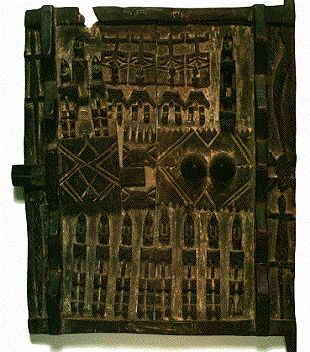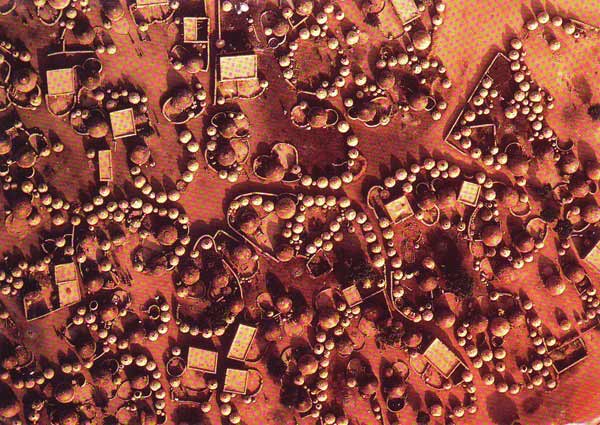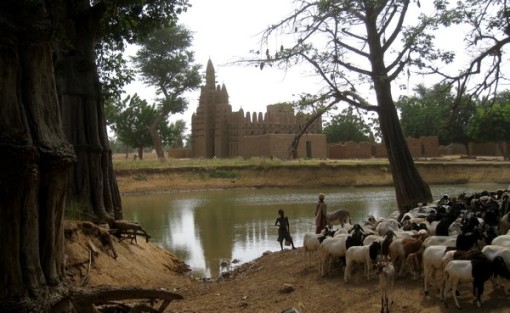|
|
Post by anansi on Feb 14, 2012 13:38:56 GMT -5
South Africa - Lesotho
Modianyeoe Sotho hats have been worn by Suto-Chuana - Setswana speakers for centuries. Sotho hats have been worn by Suto-Chuana - Setswana speakers for centuries.
 Our example was rediscovered in the UK. Its age confirms it would have arrived there during the early 20th century. This style is commonly referred to as modianyeoe. Our example was rediscovered in the UK. Its age confirms it would have arrived there during the early 20th century. This style is commonly referred to as modianyeoe.
 Meeting of Peter Wright and Mothibi -1835 Meeting of Peter Wright and Mothibi -1835
Sotho hats predate colonial rule. This sketch records Peter Wright's visit to Dithakong in 1835 where he met the Tlhaping (Sotho-Tswana) chief Mothibi. Chief Mothibi is holding a staff - and wears a cape and Sotho hat.
  Duggan-Cronin - The Southern Basotho - Circa 1930 J R Ivy Album Collection - Basutoland - Circa 1940 Duggan-Cronin - The Southern Basotho - Circa 1930 J R Ivy Album Collection - Basutoland - Circa 1940
Plate LIX of Duggan-Cronin's "The Bantu Tribes of South Africa - The Suto-Chuana Tribes" makes reference that the function of the hat was to deflect rain and that a persons blanket was drawn up around the neck in wet weather.Mbukushu Wig - Circa 1920
Botswana - Namibia - Southern Angola Mbukushu Woman - Botswana - Okavango Mbukushu Woman - Botswana - Okavango
Mbukushu 'Humbukush' women wore removable wigs as coiffeurs. They were constructed from leather and plant fiber, often the roots of the Baobab tree. Wigs were covered with ochre, animal fat and decorated with beads, buttons and shells. We have heard them refered to as Dishukeka Chikeka, Thihukeka, Mamburundu and Ihiho. Coiffures of this age are rare as they were in fashion during a period when the Mbukushu were seldom visited. It is decorated with Venetian glass beads that predate1920. Coiffures of this age are rare as they were in fashion during a period when the Mbukushu were seldom visited. It is decorated with Venetian glass beads that predate1920.
www.ezakwantu.com/Gallery%20African%20Headdresses%20-%20Wigs.htmLink to all the above
|
|
|
|
Post by anansi on Feb 15, 2012 0:50:06 GMT -5
|
|
|
|
Post by anansi on Feb 15, 2012 1:05:32 GMT -5
Knobkerrie - Beaded
Shangaan? Tsonga? Mozambique?  This fully beaded Knobkerrie of South East African origin is threaded on sinew, a practice localized to tribal people living in Southern Africa. This fully beaded Knobkerrie of South East African origin is threaded on sinew, a practice localized to tribal people living in Southern Africa.
We strongly feel the personalized status object was used as a sign of stature by a traditional healer. There are periodic beaded sections made with striped white "with four navy blue lines" - beads traditionally used exclusively by Nguni Sangoma's or Basotho Ngaka. In addition, the object was rediscovered with an amount of beaded gourds that appear to be of circa 1940 Tsonga Shangaan origin. (UK) Related gourds were used by South East African traditional doctors as medicinal charms. Zulu Knobkerry  Tsonga Prestige Knobkerrie Tsonga Prestige Knobkerrie
 This is a fine old status knobkerrie was used as an authorative scepter or staff. There are 24 studs decorating both sides of the disk and it's outer rim. This is a fine old status knobkerrie was used as an authorative scepter or staff. There are 24 studs decorating both sides of the disk and it's outer rim.
|
|
|
|
Post by anansi on Feb 15, 2012 1:50:28 GMT -5
African Beadwork - Beaded AdornmentMfengu - Thembu - Xhosa
'Ithumu'     Beaded collars were worn by both men and women throughout the tribal groups of the Eastern Cape.KemetCollar of faience beads depicting cornflowers, dates, lotus seed-pods, and petals in a pattern derived from garlands of real flowers. Faience bead collars were frequently supplied as favors to guests at banquets. This necklace typifies the technical brilliance of the faience and glass jewellery of the Armana period (1379-1362 BC). Powder Glass Beads - Sand Cast Beads Beaded collars were worn by both men and women throughout the tribal groups of the Eastern Cape.KemetCollar of faience beads depicting cornflowers, dates, lotus seed-pods, and petals in a pattern derived from garlands of real flowers. Faience bead collars were frequently supplied as favors to guests at banquets. This necklace typifies the technical brilliance of the faience and glass jewellery of the Armana period (1379-1362 BC). Powder Glass Beads - Sand Cast Beads
Powder glass beads are made from finely ground glass which is then fused. The earliest powder glass beads we know of were discovered during archaeological excavations at Mapungubwe in present day South Africa and date to 970 to 1000 AD.
Ghana is the centre of powder glass bead production in Africa, where bead making was first documented by John Barbot in 1746 . The great majority of beads were produced by Ashanti and Krobo craftsmen and women. The beads themselves play an important role in society, which include rituals of birth, coming of age, marriage and death.The Krobo make powder glass beads in vertical clay moulds, each with a number of depressions designed to hold one bead. The mould is filled with pulverized glass in colour layers, so as to obtain sequences of patterns or shapes. A cassava leaf stem is often added, so that a perforation remains when fired. Other beads are pierced when they are still hot with a pointed iron tool. Firing takes place in clay kilns.    Kemet  Collar of faience beads depicting cornflowers, dates, lotus seed-pods, and petals in a pattern derived from garlands of real flowers. Faience bead collars were frequently supplied as favors to guests at banquets. This necklace typifies the technical brilliance of the faience and glass jewellery of the Armana period (1379-1362 BC). Beaded Front Aprons Collar of faience beads depicting cornflowers, dates, lotus seed-pods, and petals in a pattern derived from garlands of real flowers. Faience bead collars were frequently supplied as favors to guests at banquets. This necklace typifies the technical brilliance of the faience and glass jewellery of the Armana period (1379-1362 BC). Beaded Front Aprons
Thembu Aprons   Thembu beaded aprons were called "inkciyo" Xhosa Nursing Charm Thembu beaded aprons were called "inkciyo" Xhosa Nursing Charm
isixhoxho Nursing charms or isixhoxho, had medicinal qualities and were worn to broadcast the wearer was a nursing mother. The adornment was accepted throughout the Eastern Cape tribes as a mother's protection. Even if a baby was not with her - the necklace ensured that no one would molest the woman, even at a beer drink. Nursing charms or isixhoxho, had medicinal qualities and were worn to broadcast the wearer was a nursing mother. The adornment was accepted throughout the Eastern Cape tribes as a mother's protection. Even if a baby was not with her - the necklace ensured that no one would molest the woman, even at a beer drink.
|
|
|
|
Post by anansi on Feb 15, 2012 2:11:40 GMT -5
Kuba Beadwork
Democratic Republic Congo - DRC Royal Kuba Masquerades - Nsheng - Kasai - Congo - 1909 Royal Kuba Masquerades - Nsheng - Kasai - Congo - 1909
The Kuba Kingdom is located between the Kasai - Lulua and Sankuru rivers in Western Kasai - DRC - Congo. The Bushong clan rules over other groups which include the Bulang, Bieng, Coofa, Cwa, Ibaam, Iding, Kaam, Kel, Kete, Maluk, Mbengi, Ngende, Ngombe, Ngongo, Pyang, Pyang Kayuweng and the Shoowa or Shobwa. 
Kuba court art displays status and prestige which are manifestations of social and political hierarchy. Wealth and rank are expressed in extensive displays beaded regalia which included belts and charms.

Highly prized imported glass beads and cowrie shells embellish the old charm.
   The bottle may have been used by a traditional healer. The bottle may have been used by a traditional healer.
 Bottles with beaded tassels attached to a stopper can be fertility dolls. Bottles with beaded tassels attached to a stopper can be fertility dolls. Turkana Apron Turkana Apron
Kenya - Rift Valley - Lake Turkana
The Turkana live in north western Kenya and are nomadic pastoralists. They have elaborate clothing and adornment. Clothing is used to distinguish between age groups, development stages, occasions and status of individuals. Young girls wear beaded front aprons built upon leather. The beads of this example are attached by old fiber and date to the 1920's. Young girls wear beaded front aprons built upon leather. The beads of this example are attached by old fiber and date to the 1920's.
|
|
|
|
Post by anansi on Feb 15, 2012 2:15:58 GMT -5
Ndebele Wedding Veil
Called an Nyoga  The Ndebele bride wore a long train with her bridal costume called an Nyoga, which meant snake. It was attached to her shoulders and trailed down the back to the ground, making a snake-like motion as the she danced. The Ndebele bride wore a long train with her bridal costume called an Nyoga, which meant snake. It was attached to her shoulders and trailed down the back to the ground, making a snake-like motion as the she danced. Married Ntwane women wearing beaded back skirts called Ntepa at a local celebration. Married Ntwane women wearing beaded back skirts called Ntepa at a local celebration.
|
|
|
|
Post by anansi on Feb 15, 2012 4:59:37 GMT -5
Dogon Art And Architecture  The Dogon are an ethnic group located mainly in the districts of Bandiagara and Douentza in Mali, West Africa. This area is composed of three distinct topographical regions: the plain, the cliffs, and the plateau. Within these regions the Dogon population of about 300,000 is most heavily concentrated along a 200-kilometer (125 mile) stretch of escarpment called the Cliffs of Bandiagara. These sandstone cliffs run from southwest to northeast, roughly parallel to the Niger River, and attain heights up to 600 meters (2000 feet). The cliffs provide a spectacular physical setting for Dogon villages built on the sides of the escarpment. There are approximately 700 Dogon villages, most with fewer than 500 inhabitants. The Dogon are an ethnic group located mainly in the districts of Bandiagara and Douentza in Mali, West Africa. This area is composed of three distinct topographical regions: the plain, the cliffs, and the plateau. Within these regions the Dogon population of about 300,000 is most heavily concentrated along a 200-kilometer (125 mile) stretch of escarpment called the Cliffs of Bandiagara. These sandstone cliffs run from southwest to northeast, roughly parallel to the Niger River, and attain heights up to 600 meters (2000 feet). The cliffs provide a spectacular physical setting for Dogon villages built on the sides of the escarpment. There are approximately 700 Dogon villages, most with fewer than 500 inhabitants.
The precise origins of the Dogon, like those of many other ancient cultures, are lost in the mists of time. The early histories are informed by oral traditions (that differ according to the Dogon clan being consulted) and archaeological excavation (much more of which needs to be conducted). Because of these inexact and incomplete sources, there are a number of different versions of the Dogon’s origin myths, as well as differing accounts of how they got from their ancestral homelands to the Bandiagara region. The people call themselves Dogon or Dogom, but in the older literature they are most often called Habe, a Fulbe word meaning ‘stranger’ or ‘pagan.’ Certain theories suggest the tribe to be of ancient Egyptian descent. After living in the region of Libya, they are believed to have migrated to somewhere in the region of Burkina Faso, Guinea or Mauritania (different scholarly sources give different places for this period). Around 1490 AD, fleeing invaders and/or drought, they migrated to the Bandiagara cliffs of central Mali. Carbon-14 dating techniques used on excavated remains found in the cliffs indicate that there were inhabitants in the region before the arrival of the Dogon; these were the Toloy culture of the 3rd to 2nd centuries BC, and the Tellem culture of the 11th to 15th centuries AD.sacredsites.com/africa/mali/dogon.html DOGON, GRANARY DOOR, Mali DOGON, GRANARY DOOR, Mali
Photograph © John Urban
These doors protected the grain and used a sliding door lock. Primordial beings, ancestors, Kanaga masks, sun lizards and scenes of life symbolically served to protect the entrance. The low reliefs are carved on several panels, held together by iron staples.   Bronze vessel in the form of crocodile with a lid. Human figure seated on the lid. The body of the vessel with linear scarifications, long, curved tail. Covered in a light green and earthen patin Bronze vessel in the form of crocodile with a lid. Human figure seated on the lid. The body of the vessel with linear scarifications, long, curved tail. Covered in a light green and earthen patin Bronze, flattened, opened mouth crocodile Bronze, flattened, opened mouth crocodile Bronze canoe in the shape of a crocodile with a rower at each end, and two couples sitting in the middle. Covered in a dark earthen patina. Bronze canoe in the shape of a crocodile with a rower at each end, and two couples sitting in the middle. Covered in a dark earthen patina. Nommo the spirit Nommo the spirit Bronze Figure Bronze Figure         
|
|
|
|
Post by anastasiaescrava on Mar 18, 2014 7:40:36 GMT -5
This is very lovely!
Any info on indigenous north Africa?
|
|
|
|
Post by anansi on Mar 19, 2014 1:06:09 GMT -5
This is very lovely! Any info on indigenous north Africa? Will post some stuff work in progress  |
|
|
|
Post by fennychow on Mar 20, 2014 22:02:18 GMT -5
Fashion is a hot topic in people's modern life.To pursue fashion and beauty,more and more people spend much time in their daily dress and hair style.To make changeable hairstyle some people choose to wear various types of hair wigs including short hair wigs,straight wigs and medium black wig and so on. |
|
|
|
Post by zarahan on Mar 22, 2014 22:52:49 GMT -5
The book below has some good info. African arts are represented in Europe from early times.  blurb: Africa in Europe, in two volumes, meticulously documents Europe's African presence from antiquity to the present. It incorporates findings from areas of study as diverse as physical anthropology, linguistics, social history, social theory, international relations, migrational studies, and globalization. In contrast to most other works focusing on Eurafrican relationships that largely revolve around Atlantic and trans-Atlantic developments since the Age of Global Exploration, this work has a much broader perspective which takes account of human evolution, the history of religion, Judaic studies, Byzantine studies, the history of Islam, and Western intellectual history including social theory. While the issue of racism in its variant manifestations receives thorough treatment, African in Europe is also about human connections across fluid boundaries that are ancient as well as those that date to the Age of Exploration, the Age of Revolution, and continue until the present. Hence, it brings new clarity to our understanding of such processes as acculturation and assimilation while deepening our understanding of interrelationships among racism, violence, and social identities. This work is full of new insights, fresh interpretations, and highly nuanced analyses relevant to our thinking about territoriality, citizenship, migration, and frontiers in a world that is increasingly globalized. The author moves across boundaries of time and space in ways that result in an encyclopedic work that is an integrated and programmatic whole as well as one in which each chapter is a complete module of scholarship that is self-contained. |
|




























































